A Tale of Two Editions
Material evidence for a Frankfurt second edition of ‘Utriusque cosmi maioris.’
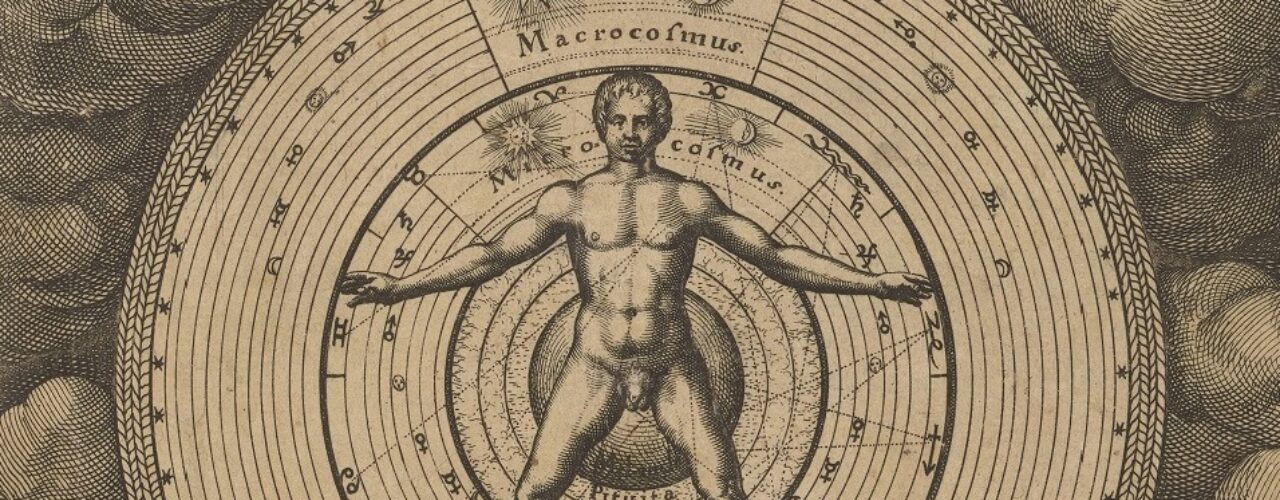
Material evidence for a Frankfurt second edition of ‘Utriusque cosmi maioris.’
The Science History Institute’s Othmer Library holds two copies of volume one of Utriusque cosmi majoris scilicet et minoris metaphysica, physica atque technica historia (The History of Two Worlds, Divided into Two Books: The Great World of the Macrocosm and the Little World of Man, the Microcosm), a hand-press book from the 17th century. (Volume one [Tomus Primus] contains the history of the Macrocosm, divided into two tracts.) The library acquired one copy from rare book collector Roy G. Neville; the second was donated by Allen G. Debus.
Until recently, we believed both copies were first editions, published in 1617 in Oppenheim (in what is today Germany). However, copy-specific research reveals multiple print variations between the two copies—what bibliographical scholars call “material evidence.”
These variations tell a story of the struggle to publish natural philosophical ideas, which were considered heretical to Christianity, and shine a light on how knowledge was circulated during the hand-press era, when books were individually typeset and manually printed. The material evidence also debunks common bibliographical errors pertaining to this text in many collecting institutions today.
Written by English physician Robert Fludd (1574–1637), Utruisque cosmi maioris is an encyclopedic work that covers the creation of the universe and its inhabitants; the arts and sciences, including music, astrology and fortification; and human faculties. Fludd’s Paracelsian understanding of medicine as well as his Rosicrucian mysticism pervade his writing and made his work controversial in an era dominated by the Thirty Years’ War (1618–1648), a protracted conflict between Catholic and Protestant forces.
Fludd’s Rosicrucianism was a reform-oriented philosophy that searched for patterns in nature based in ancient mathematical theory, combining ideas found in ancient Jewish mysticism with Christian hierarchies of the cosmos. In order to ensure that his Cabbalistic vision was accurately represented, Fludd worked closely with the like-minded engraver and publisher Johann Theodor de Bry (1561–1623), whose printing house published Rosicrucian-based philosophical texts during this tumultuous period in European politics and religion.
Johann Theodor de Bry was born into a family of Calvinist printers. His father, Theodor de Bry (1528–1598), had been banished from the Catholic Spanish Netherlands after converting to Protestantism. In 1588 the family settled in Frankfurt, where Theodor established a successful printing house, which Johann Theodor took over after his father’s death. Sometime before the Thirty Years’ War broke out in Germany, he moved the business to Oppenheim for religious reasons. There, he began printing Fludd’s Utriusque cosmi maioris in 1617 and completed the first edition in 1618. When the war began that same year, followed in 1620 by the Catholic Spanish capture of Oppenheim, De Bry had to abandon his printing practice in Oppenheim and return to Frankfurt, which is where he printed the second edition.
In the context of hand-press era works, the term “edition” refers to all copies of a book printed from a single typesetting. A new edition indicates that the type had been reset to print the pages. So, how did it come to pass that the Science History Institute mistakenly believed that it had two copies of the first edition of Utriusque? How did our second edition (the Debus copy) mask its differences from the first edition? And how was material evidence used to uncover the second edition? As we will see, the Othmer Library’s two copies of Utriusque contain fascinating print anomalies that tell us about the 17th-century production of this text.
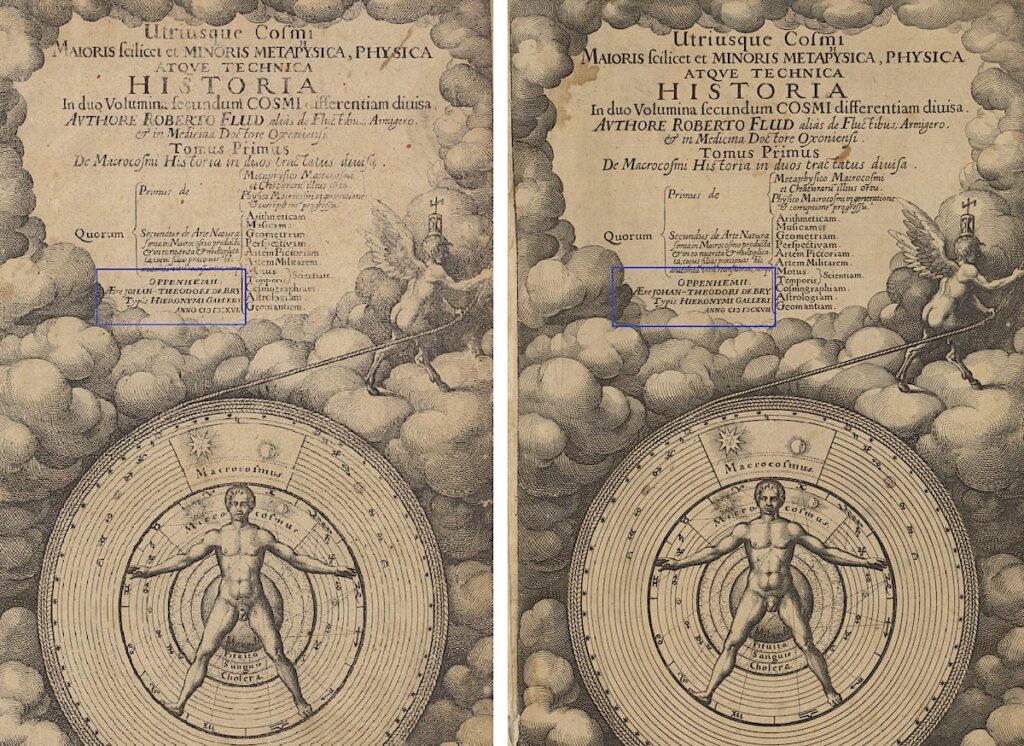
Figure 1: Title page from the Neville copy, a true first edition (left), and from the Debus copy (right).
Each copy has the same engraved title page, printed from the same plate, with the place and year of publication as Oppenheim in 1617. However, other details of the Debus copy reveal its divergence from a true 1617 first edition. It appears that for the 1624 edition, De Bry opted to reuse the plate containing the first edition publication information rather than engrave a new title page, confusing bibliographers for centuries to come.
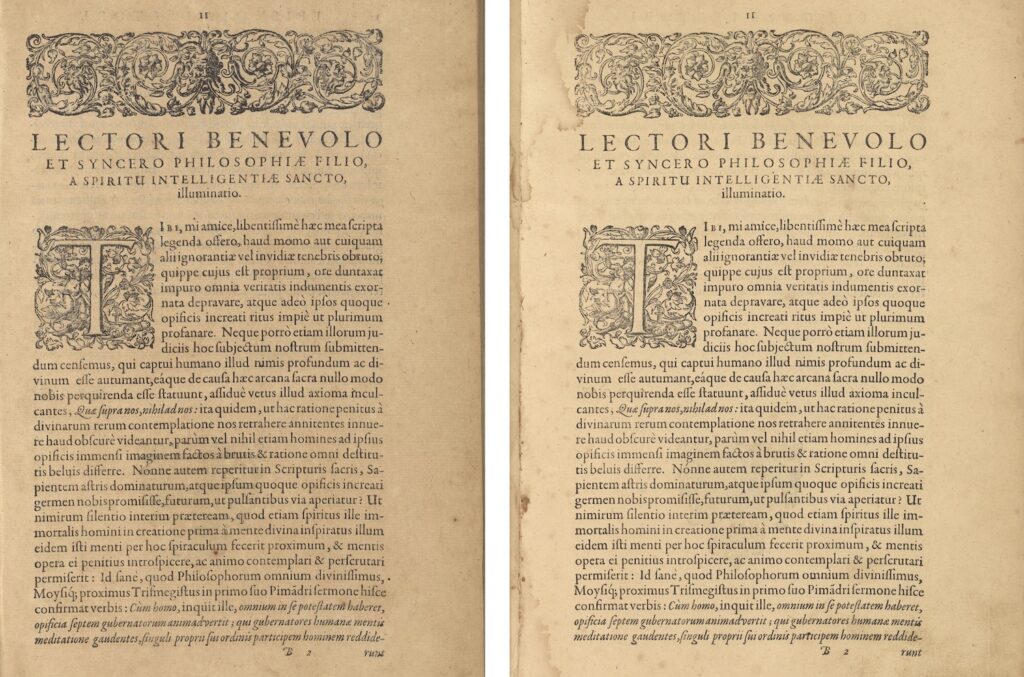
Figure 1: Title page from the Neville copy, a true first edition (left), and from the Debus copy (right).
Pages 11–14 of the Debus copy advance the confusion. Close comparison of the typesetting of these pages in both copies reveals that they all come from the first edition production. Moreover, the watermark on page 11 in both copies is identical, indicating that these leaves came from the same paper mill.
Print anomalies throughout the rest of the two copies prove the remainder of the Debus copy is a second edition. This type of hybrid edition is not uncommon in Debus’s collection. As a scholar interested in the circulation of scientific knowledge, Debus had many copies of texts made up of pages from various editions, or even photocopies, spliced together.
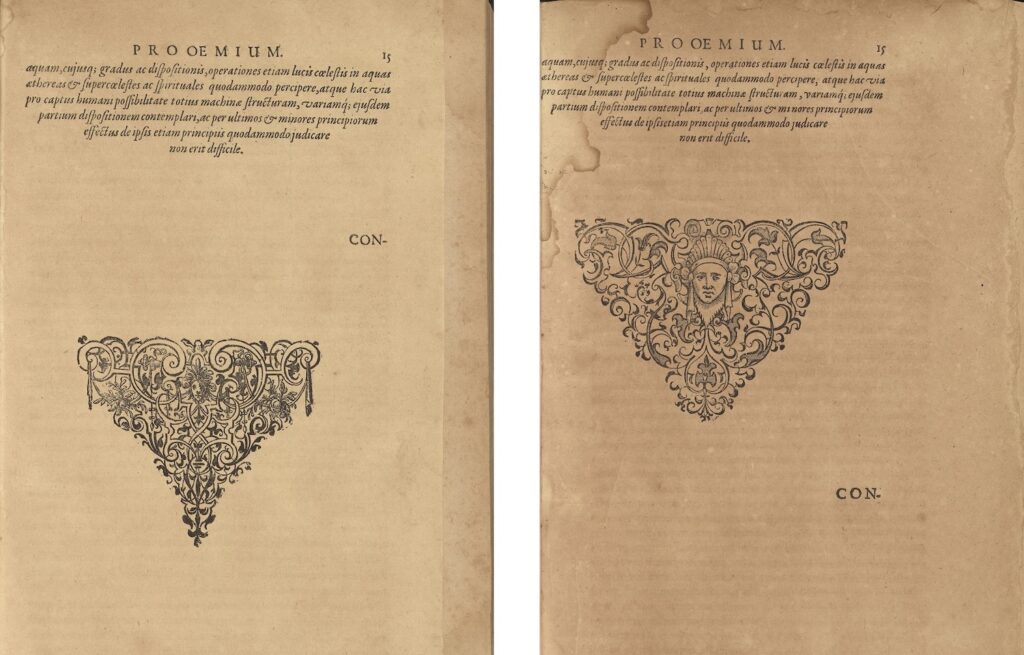
Figure 3: Page 15 from the Neville and Debus copies, respectively.
From page 15 on, the Debus copy (above right) reverts to the Frankfurt second edition typesetting. This is evident from the variation in decorative printers’ stamps between the two copies. The stamps are very similar, though not identical, creating a facsimile effect between the two editions. These specific stamps are used throughout the second edition and are an easy way to tell the copy is the Frankfurt second edition.
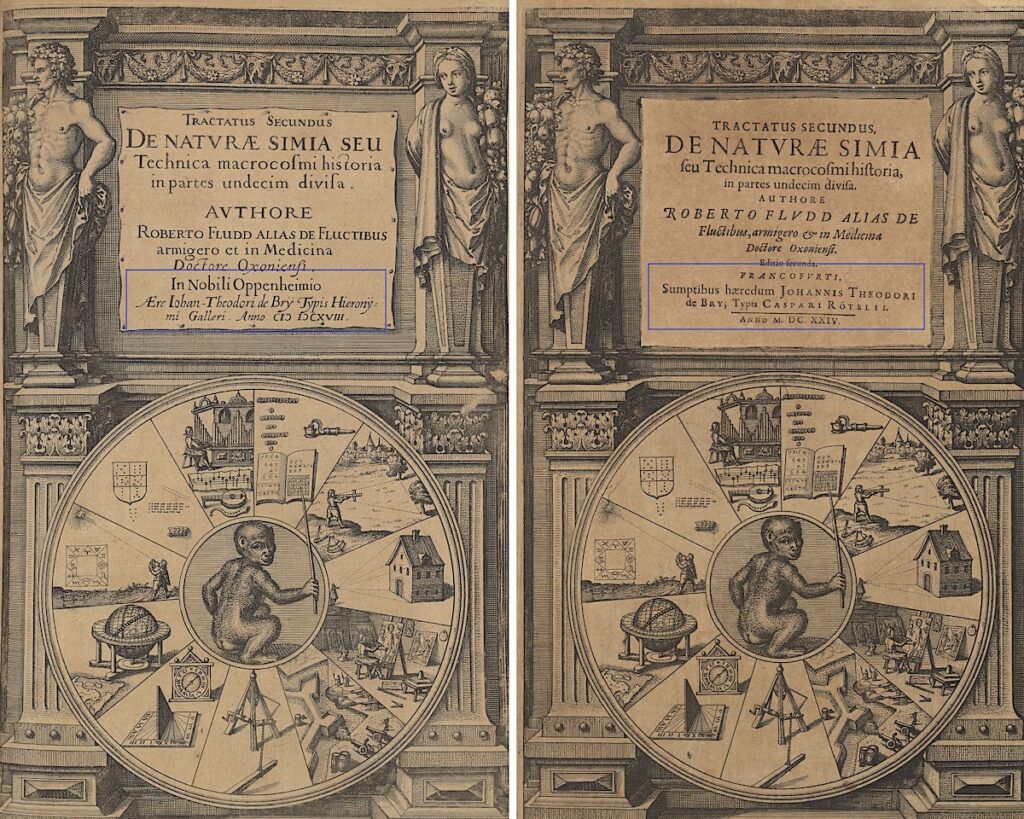
Figure 4: The sectional title page for Tractactus Secundus in the Neville and Debus copies, respectively.
Like many early modern works, Utrisque cosmi maioris contains additional title pages for individual sections of the work. The engraved title page for Tractatus Secundus features an ape with a human-like expression surrounded by visual representations of the 11 themes addressed in the tract: universal arithmetic, the temple of music, geometry in theory and practice, optic science, visual arts, military arts, motion, time, cosmography, astrology, and geomancy.
Unlike the main title page (pictured above in Figure 1), which was printed from a single engraved plate, this second tract title page is made up of composite engravings. This allowed De Bry to include accurate publication information for the second edition: the title page of the second tract in the first edition reads “Oppenheim, 1618” and “Frankfurt, 1624” in the second edition.
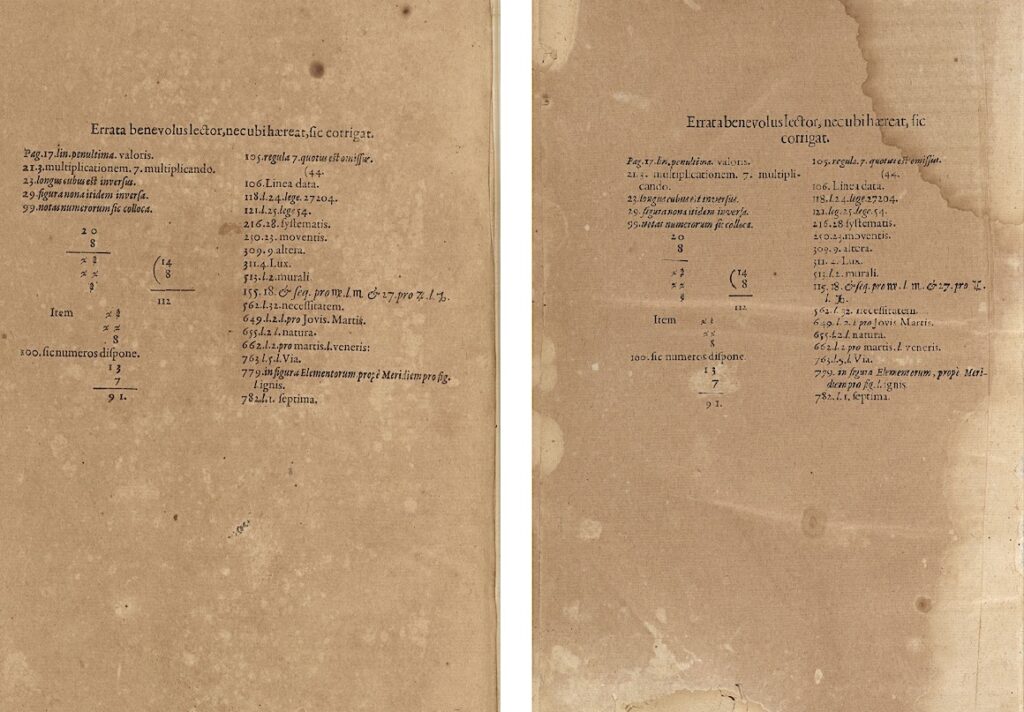
Figure 5: The Errata page from the Neville and Debus copies, respectively.
The Errata (printing errors) page in the second edition is copied verbatim from the first edition, although the type has been reset. It is unclear why De Bry chose not to correct typographical errors between editions. Perhaps he had unbound leaves of text from the first edition that he planned to include in some copies of the second edition. Or perhaps retaining the first edition’s errors was part of a larger effort to make the second edition look like a facsimile of the original—an attempt to visually represent the continued production of a text that was interrupted by political instability.
Megan Piorko’s scholarship focuses on 17th-century alchemical texts, material and visual culture of the book, and alchemical ciphers.
Pets aren’t allowed in our museum or library, but you’ll find plenty of them in our collections.
Why oral history is critical for the history of science and engineering.
A chemistry curriculum with bonds beyond the molecule.
Copy the above HTML to republish this content. We have formatted the material to follow our guidelines, which include our credit requirements. Please review our full list of guidelines for more information. By republishing this content, you agree to our republication requirements.